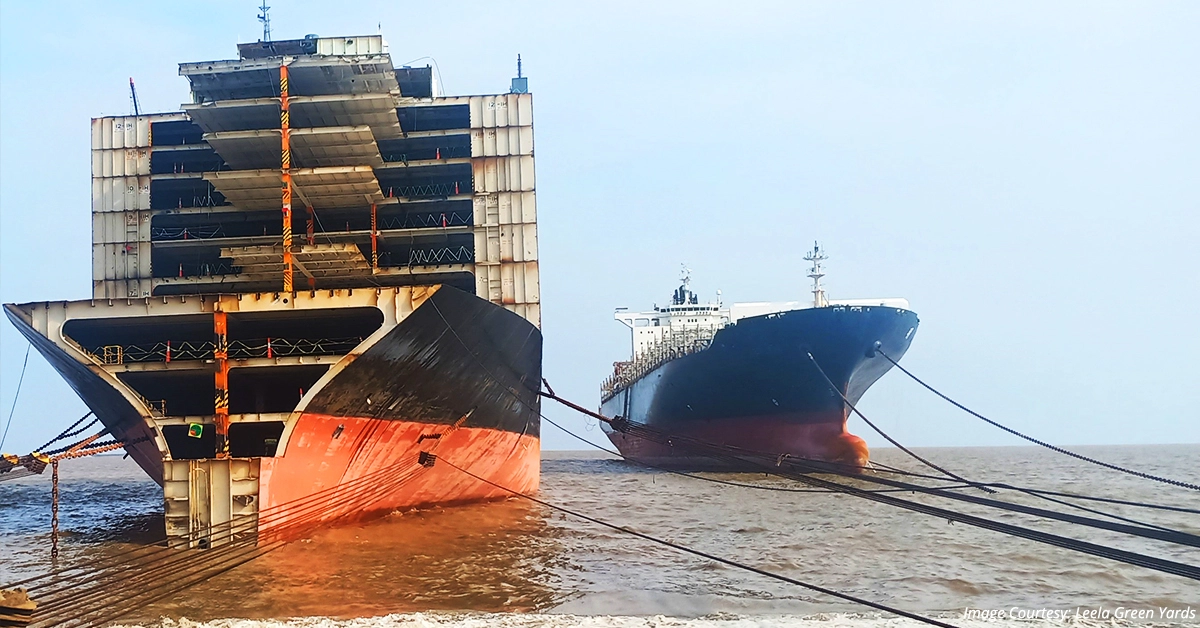Pulling of ships towards the recycling yards
In major ship recycling destinations such as Turkey, India, Pakistan, and Bangladesh, ships are recycled at the sea-shore interface. Superannuated ships are delivered to the recycling facilities, where the hull is cut into big slices. These gigantic slices are shifted to the secondary cutting zones for the extraction of steel plates. The ship’s hull needs to be gradually pulled towards the ship recycling yard to cut further slices. Have you ever wondered how the massive hull of a ship is pulled towards the recycling facility?
Ship recyclers who recycle ships at sea-shore interfaces have developed unique techniques to pull the hull towards yards. Strategic windows are cut on the ship’s side shell on the port and starboard side. Through these openings, giant chains are passed. These chains are connected to the steel wires with the help of robust shackles and pulleys. Steel wires are connected to the heavy-duty winches. These heavy chains, shackles, and pulleys are shifted and passed through the hull openings with the help of moving cranes.

The wires used for winching operation are typically 32 mm in diameter.
Usually, any ship recycling facility has two or sets of winches. These winches are powered by diesel engines. Winches are periodically load tested. Routine maintenance is carried out on the winches and their prime movers. Protective guards cover winches to guard the operator in case the wire snaps.
The ship’s hull is pulled towards the recycling yard during high tide because the aft part of the hull gets partially lifted due to buoyancy and significantly lessens the load on the winches. Before pulling operation, adjacent recycling facilities are alerted beforehand. Throughout this critical operation, none of the other tasks are allowed in the yard.
Following the winching operation, the steel wire ropes are coiled and stored in the trays adjacent to the winches. Qualified inspectors regularly inspect the wires for any kinks, broken strands, corrosion, and any other defects. It helps to assess the real condition of the wires and the need for replacement.
With the use of heavy-lift capacity cranes with more extended booms, larger slices are cut and lifted from the ship’s hull and kept on the secondary cutting zones, minimizing the use of winches to pull the hull.
The process of pulling the hull is periodic and needs to be conducted with absolute care and precautions. Few recycling facilities use the load cells to monitor the load applied on the wires as they have understood the significance of monitoring load. And they have developed the Standard Operating Process to execute these critical tasks seamlessly without any incident and accident.
Contact Us
Contact Us